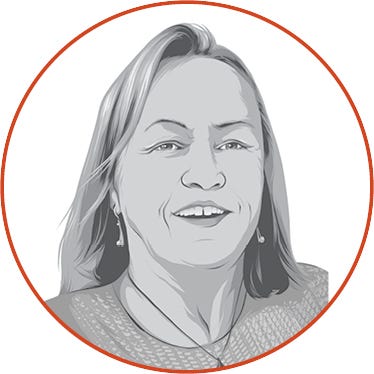
Editor's note: Farm Futures’ exclusive Best Places to Farm report ranks the financial performance of 3,056 counties. By analyzing proprietary data and the recently released results from USDA’s 2022 Census of Agriculture, Farm Futures averaged weighted ranks of the ratios on return on assets, profit margins and asset turnover for each county. How does your county rank? Visit the interactive map to check the ranking of 3,056 counties and browse other stats.
Farm Futures’ latest study, Best Places to Farm, shows the business of farming is as complex as ever. Unpredictable input pricing coupled with rising land values chew up economic success, as measured by key financial rations.
Farm size is but one determinant in the calculation, with other variables skewing the solution. Sure, size matters but so does the yield from each acre, a strong basis, alternative inputs that drive down production costs, and urban proximity — the double-edged sword that can squash expansion or diversify opportunities.
Considering all these factors, you may be shocked to learn over half of the top 10 farm counties are in Mississippi — and no Midwest county shows up until No. 31 with Newton County, Mo. And it only counts if you consider the most southern end of Missouri as part of the Midwest.
All this supports an overall observation by Allan Gray, executive director of the Center for Food and Agricultural Business at Purdue University. Looking at the last 15 years, Gray sees a crossroads between productivity and land prices.
“That’s why you see North Dakota stand out,” he says. “North Dakota, probably because of climate change, has become a more productive state for producing cash grain crops. But it has been done at land values that are substantially less than Iowa, Illinois and Indiana’s. If you have less value of the asset and it’s getting more productive, what’s going to happen over time is that land value will come up.”
Gray says that’s what’s happening in North Dakota: “You’re seeing less and less of that asset turnover, or that sort of return on assets, being in North Dakota because the asset values are rising over that 10-year period.”
Corn Belt assumptions
Gray’s theory proves out when looking at Corn Belt rankings, which are lower than many would expect. Gray says the land values have caught up to the productivity, and earning a return on that investment is a higher mountain to climb.
“These are hypotheses that I have,” he notes, “but it seems consistent with what I would have thought would happen.”
Which takes him to the western United States. Land values are high, but product value is as well.
“Look at those counties down in the Yuma, Ariz., area,” he says. “Really high-value products produced at a time of the year when the rest of the country cannot produce it creates a lot of value on expensive land. But they’re creating a tremendous amount of value there.”
Weather issues and even higher land values made some typically lucrative California regions less profitable.
“Land is way too expensive,” Gray says of California’s valleys. “They can’t produce the same way as they can down in Yuma. The wintertime cropping that they can do in Yuma makes a big difference for them.”
Other criteria such as available water further defines which counties offer the greatest opportunity for success. Those are variables that impact the financial numbers for the Best Places to Farm rankings.
Take strong basis to bank
Jacqui Fatka, an analyst for CoBank’s Knowledge Exchange Division, sees other economic factors carrying the load for counties with stifling land values, even in the face of low commodity prices. “We know when farmland becomes available next to your farm, you want to be in the right position to buy it,” she says.
Her father, an Iowa farmer, did. He nearly doubled his owned land base, locking in interest rates below 4% over the last 10 years as he built up his working capital to jump on the ideal neighboring land when it became available. High government payments in recent years also provided additional working capital.
But just because it’s ideally located, doesn’t mean it will pencil out. After many years of renting nearly 451 acres across the road from his farm, Fatka’s father finally got the opportunity to buy it. Because of some earlier land purchases and the cost to improve the latest parcel on top of the sale price, he decided to keep just 122 of those acres and sold off another 329.
Simply put, Fatka says, he determined the value that land provided to his operation and kept what served his best interests.
Fatka also suggests farmers look locally for opportunities. “What kind of basis do you have in your own area? How can you take advantage of your local uses?” she asks.
Proximity to end users creates a strong economic environment for farmer Wayne Belger, who calls Kershaw County, S.C. — No. 1 in Best Places to Farm — as home.
“Location. Location. Location,” Belger says, pointing to the county’s plentiful water and agribusinesses that create strong basis and provide synergies. Consider these ventures:
ADM operates a local plant that buys and processes soybeans.
Two feed mills buy corn in this corn-deficit state.
Prestage Foods contracts local production and offers a byproduct from poultry processing as a price-stable alternative to commercial fertilizer.
Flowing in more revenue
For Steve Reinhard, chairman of the United Soybean Board, finding additional revenue streams is a core goal for USB, as well as his farm in Crawford County, Ohio — ranked No. 826, up from No. 940 in 2017.
Nearby, Poet biorefining plants along with Bunge and ADM processing plants help boost farm income through sales and synergies, particularly for livestock operations.
For soybean producers across the county, Reinhard says USB works to promote infrastructure and production that supports end uses near farmland, including research on alternative fuels, new end-use products and improved infrastructure, such as a timely research project on dredging the Mississippi River.
On his farm, Reinhard says, “We’re seeing a little bit of improved return.”
Across soybean country, however, Reinhard says he’s proud of the $12.34 return for every dollar producers contribute to the USB.
Looking at the overall rankings and overlaying the meal and fuel opportunities, he notes: “I think it’s really interesting thing to look at the return on asset in this study and relate it back to the return on investment for the United Soybean Board.”
Opening those doors offers opportunity. The operational climb is finding the flexibility to adjust production to realize a return won asset. “Good farmers realize that they have to be able to continue to farm,” Fatka says.
Kelvin Leibold, farm management specialist at Iowa State University Extension, says farming today, especially in northwest Iowa, is more about business acumen than agronomics.
“The marketing and finance is where a new farmer would struggle out here,” he says. “The key to success is managing the margins.”
Learn more about Farm Futures' Best Places to Farm study and view the interactive map to see where your county ranks.

Ag census data from 2012 and 2017 show how financial performance migrated across the U.S. Record grain prices in 2012 helped profits surge across the Corn Belt and Prairies, but weather and rising surpluses punished 2017 crop incomes. Poultry saved the day for the Southeast in 2022.
About the Author(s)
You May Also Like






